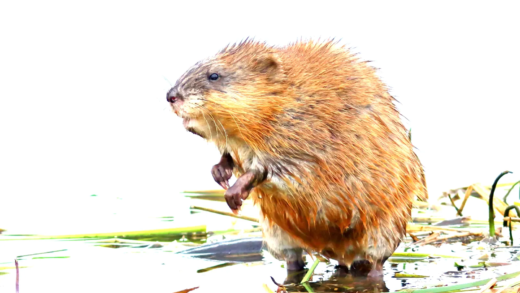Emus and ostriches, the largest birds on Earth, exhibit significant differences in size, speed, habitats, and behaviors. Emus, native to Australia, are smaller and more agile, while ostriches from Africa are larger and faster. Their habitats influence their adaptations, with emus thriving in various Australian environments and ostriches in open savannas. Understanding these differences is essential for appreciating their roles in ecosystems.
Size Matters: Exploring the Differences Between Emus and Ostriches
Emus and ostriches are two of the largest birds on the planet, and understanding their size differences is crucial for enthusiasts and researchers alike. Emus, native to Australia, typically stand about 5 to 6.5 feet tall, whereas ostriches, hailing from Africa, can tower at impressive heights of 8 to 9 feet. This stark difference not only highlights their physical diversity but also reflects their adaptations to different environments.
When it comes to weight, emus generally weigh between 40 to 130 pounds, while ostriches can weigh anywhere from 220 to 350 pounds. This considerable weight difference can be attributed to their respective habitats and lifestyles. Emus are more agile and suited for the open Australian bush, whereas ostriches, with their bulkier frames, are adapted for running in the vast savannas.
Key Size Differences
- Height: Emus: 5-6.5 feet; Ostriches: 8-9 feet
- Weight: Emus: 40-130 pounds; Ostriches: 220-350 pounds
- Body Shape: Emus have a slimmer, more elongated body; ostriches are stockier.
Their size differences also affect their survival strategies. Emus, being lighter and more agile, can navigate through dense vegetation and escape predators more effectively. Conversely, ostriches rely on their size and speed, capable of running up to 45 miles per hour to evade threats. Such adaptations are essential for their survival in the wild.
In conclusion, the size differences between emus and ostriches are not just numbers; they represent a range of adaptations and survival strategies. Understanding these differences helps us appreciate the unique roles each bird plays in their respective ecosystems.
Speed Showdown: Comparing the Running Speeds of Emus and Ostriches
Emus and ostriches are not just fascinating birds; they are also among the fastest runners in the avian world. Their speed is crucial for survival, allowing them to escape predators and cover large distances in search of food. When it comes to speed, ostriches take the crown, capable of reaching impressive speeds up to 45 miles per hour (72 kilometers per hour). In contrast, emus can sprint at speeds of about 30 miles per hour (48 kilometers per hour). While both birds are fast, the ostrich’s sheer size and muscular build give it an edge in speed.
Let’s break down their speeds further:
- Ostriches: Can run up to 45 mph (72 km/h)
- Emus: Reach speeds of 30 mph (48 km/h)
Their unique adaptations contribute to these impressive speeds. Ostriches have long, powerful legs and a lightweight body structure, which allows them to maintain high speeds over longer distances. Emus, while not as fast, have strong legs that enable quick bursts of speed, ideal for navigating their native Australian bush. Interestingly, the emu’s speed is often sufficient to evade predators in its environment.
Speed isn’t just about escaping danger; it also plays a role in their social behaviors. For instance, ostriches often run in groups, which can confuse predators. Meanwhile, emus are more solitary and use their speed for quick escapes. Understanding these speed differences provides insights into their respective survival strategies in the wild.
In conclusion, while both emus and ostriches are remarkable for their speed, the ostrich’s ability to reach higher velocities reflects its adaptation to the open savannas of Africa. Emus, on the other hand, showcase agility suited to their bushland habitats. This difference highlights the fascinating ways in which these birds have evolved to thrive in their specific environments.
Natural Habitats: Where Do Emus and Ostriches Live?
Emus and ostriches thrive in distinct habitats that reflect their adaptations and geographical distributions. Emus are primarily found in Australia, occupying diverse environments ranging from open grasslands to forested areas and scrublands. They are incredibly versatile and can adapt to various climatic conditions, from arid regions to more temperate zones. This adaptability allows them to forage for food efficiently, primarily consisting of seeds, fruits, and insects.
In contrast, ostriches are native to the African savannas, grasslands, and semi-arid regions. They prefer open areas that provide visibility, enabling them to spot predators from a distance. Their habitats often include regions with sparse vegetation, which aids their running ability. Ostriches rely heavily on their speed for survival, which is crucial in the vast, open landscapes they inhabit.
Key Habitat Features
- Emus: Found across Australia; adaptable to various climates; thrive in grasslands, forests, and scrublands.
- Ostriches: Native to Africa; prefer open savannas and grasslands; rely on visibility to avoid predators.
Both birds exhibit unique survival adaptations linked to their habitats. For instance, emus have developed foraging behaviors that allow them to find food in diverse environments, while ostriches have strong legs and a keen sense of sight that enable them to run swiftly and escape threats. Understanding the natural habitats of emus and ostriches not only highlights their ecological roles but also emphasizes the importance of conserving their environments.
In summary, emus and ostriches occupy different habitats that significantly influence their behaviors, diets, and survival strategies. By studying these habitats, we gain insight into how each species has evolved to thrive in its unique ecological niche.





Comments are closed.